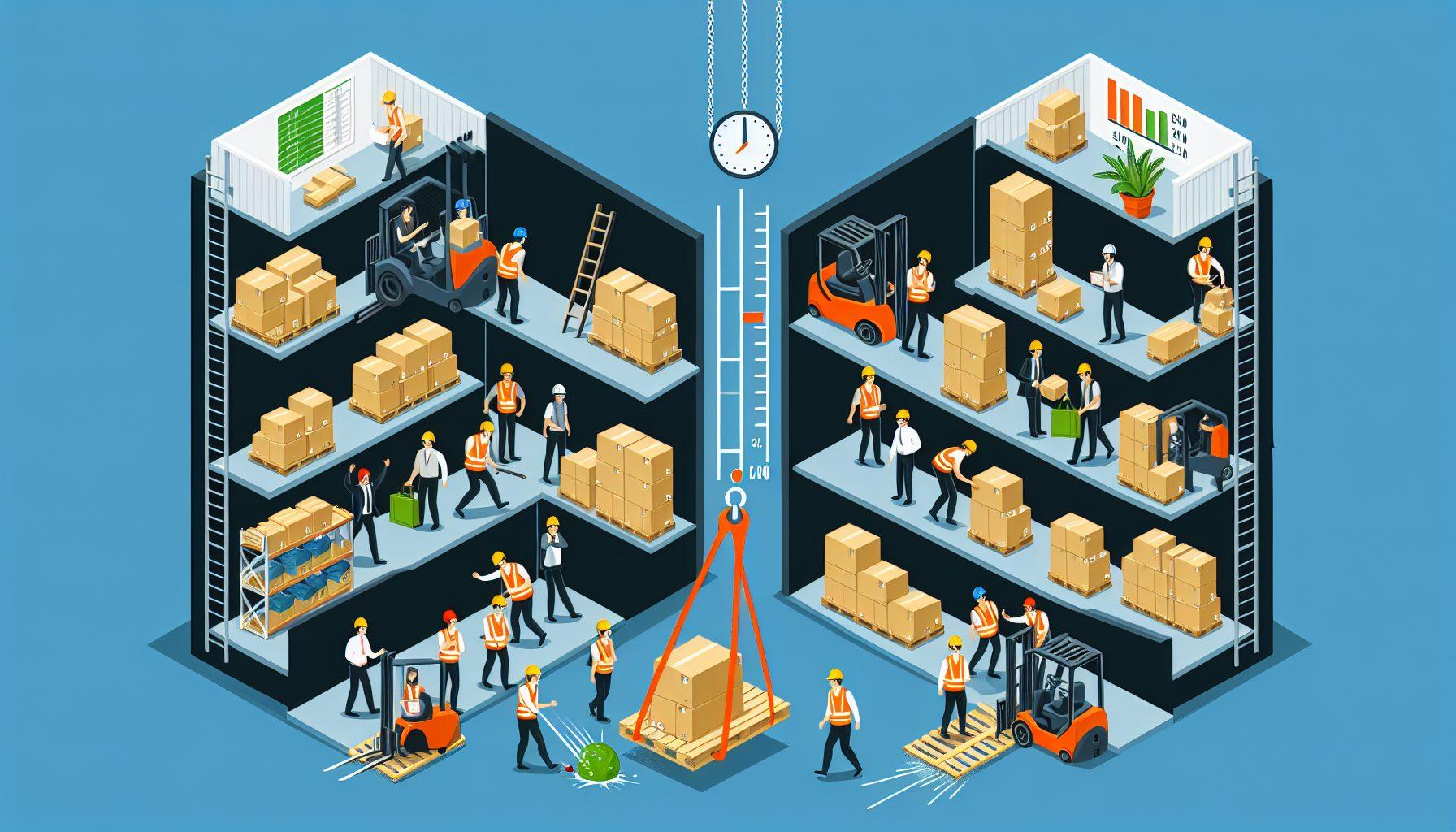Warehouse operations play a crucial role in the success of any business. From storing and organizing inventory to managing logistics, warehouses are a hub of activity. However, with the high level of activity and numerous moving parts, accidents can and do happen. These accidents not only pose a risk to employees’ safety but also have a significant financial impact on the company.
The Cost of Warehouse Accidents
Warehouse accidents can result in various costs that can quickly add up. Let’s take a closer look at some of the financial implications:
- Medical expenses: When an employee is injured in a warehouse accident, medical expenses are often incurred. From immediate medical treatment to ongoing rehabilitation and follow-up appointments, the cost of medical care can be substantial.
- Workman’s compensation claims: In cases where a worker is injured on the job, they may be entitled to workers’ compensation. This can include compensation for medical expenses, lost wages, and even disability benefits if the injury prevents the employee from returning to work. These claims can be a significant financial burden for a company.
- Legal fees: In some cases, warehouse accidents may result in legal action. Hiring legal representation to defend against claims or settling out of court can be costly.
- Productivity loss: When an accident occurs, work is disrupted. The injured employee may need time off to recover, and others may be occupied with incident reporting and investigation. This can lead to a decrease in productivity and delays in fulfilling orders, impacting customer satisfaction and potentially leading to financial penalties or loss of customers.
- Damaged inventory: Accidents can also result in damage to stored inventory. This can include items falling, getting crushed, or being exposed to hazardous substances. The cost of replacing damaged inventory can be substantial, especially if the product is expensive or difficult to source.
- Equipment repair or replacement: In some cases, accidents may cause damage to warehouse equipment or machinery. Repairing or replacing this equipment can be costly, as it is necessary for efficient warehouse operations.
Considering the significant financial impact of warehouse accidents, it is crucial for companies to prioritize safety and take proactive measures to prevent accidents from occurring.
Warehouse optimization solutions provided by HCO Innovations can help businesses mitigate the risk of accidents and minimize the financial burden associated with warehouse incidents.
Preventing Warehouse Accidents
Implementing safety measures and best practices can go a long way in preventing accidents within the warehouse. Here are some key steps that companies can take:
- Employee training: Proper training on warehouse safety protocols, equipment operation, and handling hazardous materials should be provided to all employees. This includes regular refresher courses to reinforce safety practices.
- Clear signage and markings: Clear and visible signage indicating potential hazards, emergency exits, and safety precautions can help employees navigate the warehouse safely.
- Regular equipment maintenance: Conducting routine inspections and maintenance of warehouse equipment helps ensure that everything is in good working condition and reduces the risk of accidents due to equipment failure.
- Ergonomic considerations: Designing workspaces with ergonomics in mind can help reduce the risk of musculoskeletal injuries and improve overall employee well-being.
- Slip and fall prevention: Implementing measures such as proper flooring, non-slip surfaces, and regular cleaning can reduce the risk of slip and fall accidents, which are common in warehouse environments.
- Regular safety audits: Conducting regular safety audits helps identify potential hazards and allows for prompt corrective action before accidents occur.
By investing in warehouse optimization solutions and implementing these preventive measures, businesses can create a safer working environment for employees and significantly reduce the financial impact of warehouse accidents.
In Conclusion
Warehouse accidents have a tangible and significant financial impact on businesses. From medical expenses and workers’ compensation claims to damaged inventory and productivity loss, the costs associated with accidents can be substantial. It is crucial for companies to prioritize safety and take proactive measures to prevent accidents from occurring. Partnering with a company like HCO Innovations, which specializes in warehouse optimization solutions, can help businesses enhance safety, productivity, efficiency, and cost-effectiveness within warehouse operations.
To learn more about how HCO Innovations can help your business reduce the financial impact of warehouse accidents, visit their website here.

